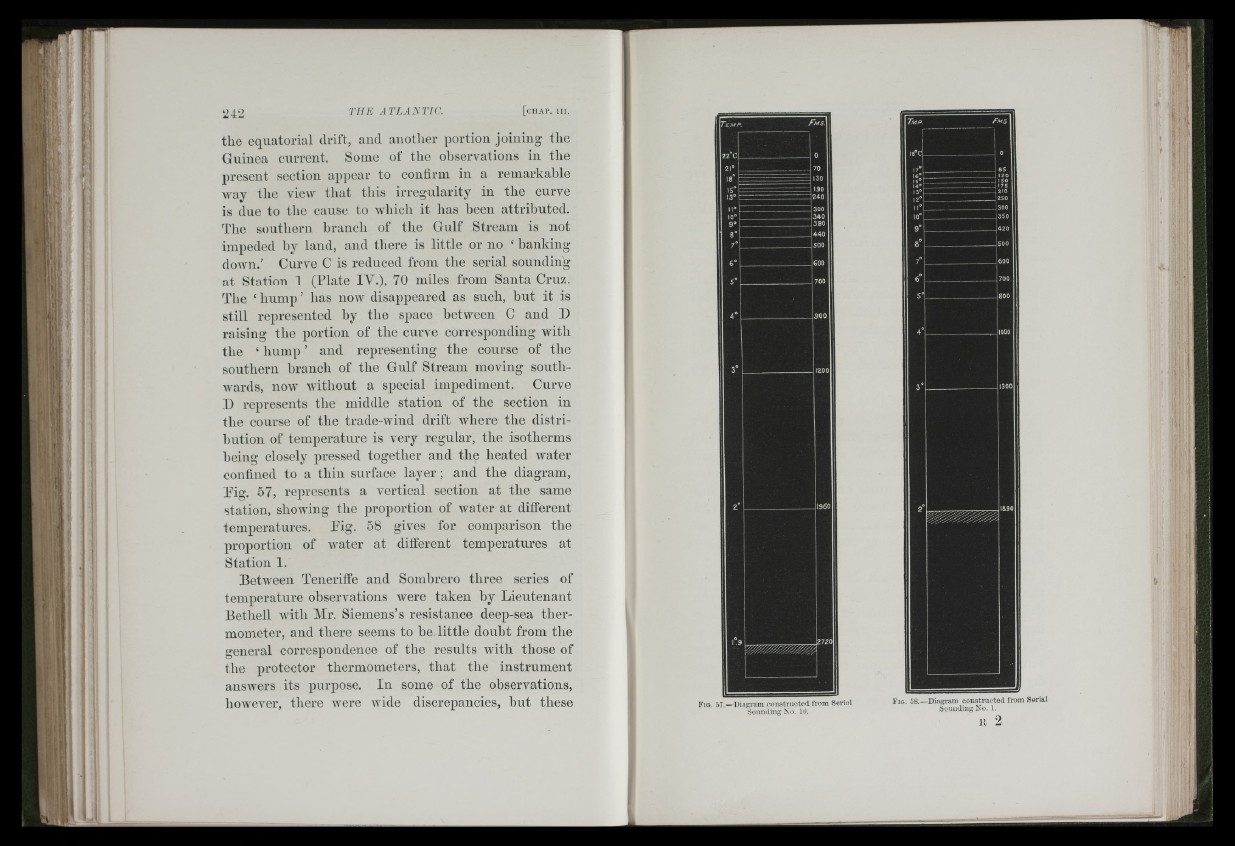
tIf f!i ‘
Ti " "
'M
”4
;:!fl
:4
n
!
L! ”
!■
-ii'l , ■
the equatorial drift, and another portion joining the
Guinea enrrent. Some of the ohservations in the
present section appear to confirm in a remarkable
way the view that this irregularity in the curve
is due to the cause to Avhich it has heen attributed.
The southern branch of the Gulf Stream is not
impeded by land, and there is little or no ‘ banking
doAvn.’ Curve C is reduced from the serial sounding
at Station 1 (Plate IV.), 70 miles from Santa Cruz.
The ‘ hump ’ has u o a v disappeared as such, but it is
still represented by the space hetween C and D
raising the portion of the curve corresponding with
the ‘ hump ’ and representing the course of the
southern branch of the Gulf Stream moving south-
Avards, noAV Avithout a special impediment. Curve
D represents the middle station of the section in
the course of the trade-wind drift Avhere the distribution
of temperature is very regular, the isotherms
heing closely pressed together and the heated water
confined to a thin surface layer; and the diagram,
Eig. 57, represents a vertical section at the same
station, showing the proportion of water at diiferent
temperatures. Pig. 58 gives for comparison the
proportion of Avater at different temperatures at
Station 1.
BetAveen Teneriffe and Sombrero three series of
temperature observations Avere taken by Lieutenant
Bethell Avith Mr. Siemens’s resistance deep-sea thermometer,
and there seems to be little douht from the
general correspondence of the results Avith those of
the protector thermometers, that the instrument
ansAvers its purpose. In some of the ohservations,
hoAvever, there Avere Avide discrepancies, but these Fio. 57. —Diagram oonstrncted from Serial
Sounding No. 10.
Fig. 58.—Diagram co nstructed from Serial
Sounding No. 1.
n:
iiiii 1
d :
[ . A".
4 ....t.e...i.
I:
' ii:!
' ' ii ’ ■
j
* 4;;;..
Ai;:
p!'h
'■ I
I '